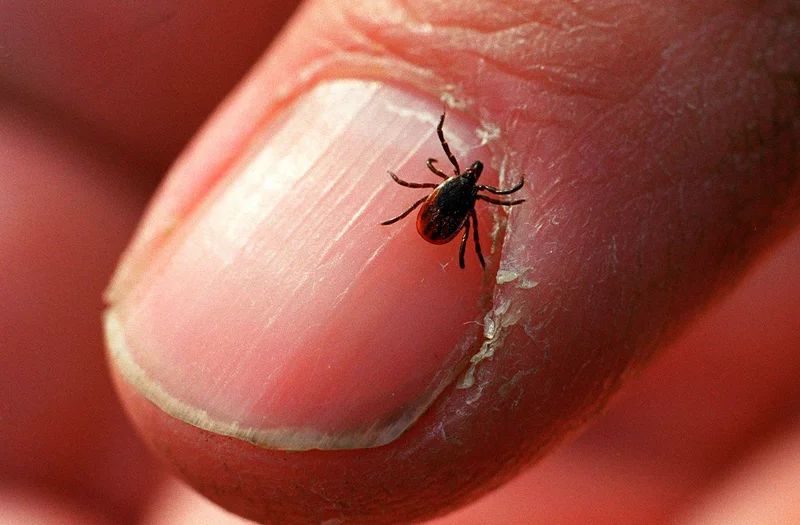Controlling Ticks in Upstate New York: Start in Early Spring!
Pest Control, Wildlife Exclusion Services, Residential/Commercial Construction, Mold Restoration and Fire & Water Damage Repair
Ticks are more than just a nuisance; they are vectors for serious diseases such as Lyme disease, anaplasmosis, and babesiosis. In Upstate New York, the onset of spring heralds not only blooming flowers but also the resurgence of tick activity. Addressing tick control proactively in early spring is crucial for safeguarding public health and enjoying the outdoors without concern.

Understanding Tick Activity in Upstate New York
Ticks, particularly the black-legged tick (Ixodes scapularis), commonly known as the deer tick, are prevalent in Upstate New York. These arachnids thrive in wooded areas, tall grasses, and leaf litter. Their life cycle comprises four stages: egg, larva, nymph, and adult. Nymphs, active during late spring and early summer, are especially concerning due to their small size and propensity to transmit pathogens.
The Importance of Early Spring Intervention
Initiating tick control measures in early spring is vital for several reasons:
- Disrupting the Life Cycle: Early intervention can reduce the population of nymphs, which are responsible for the majority of Lyme disease cases.
- Reducing Human-Tick Encounters: Proactive measures decrease the likelihood of tick bites during peak outdoor activity seasons.
- Minimizing Disease Transmission: Lower tick populations correlate with reduced transmission of tick-borne diseases.
New York State Department of Health
Effective Tick Control Strategies
Implementing a combination of personal protection, landscape management, and professional pest control services yields the best results in tick management.
1. Personal Protection Measures
- Appropriate Clothing: Wear long-sleeved shirts and long pants when venturing into tick-prone areas. Tucking pants into socks creates a barrier against ticks.
- Use of Repellents: Apply EPA-registered insect repellents containing DEET, picaridin, or oil of lemon eucalyptus to exposed skin and clothing. These repellents have been shown to offer long-lasting protection against mosquito bites, though data regarding their efficacy against ticks are limited.
- New York State Department of Health
- Regular Tick Checks: Conduct thorough body checks after outdoor activities, focusing on areas such as the armpits, groin, and scalp. Prompt removal of ticks reduces the risk of disease transmission.
- New York State Department of Health
2. Landscape Management
- Maintain Lawns: Regularly mow lawns to discourage tick habitation.
- Remove Leaf Litter: Clearing leaf litter and tall grasses from yards eliminates potential tick habitats.
- Create Tick-Safe Zones: Establishing a 3-foot wide barrier of wood chips or gravel between lawns and wooded areas can restrict tick migration into recreational spaces.
3. Professional Pest Control Services
Engaging professional pest control services ensures comprehensive tick management:
- Targeted Treatments: Professionals apply acaricides to areas where ticks are commonly found, effectively reducing their populations.
- Integrated Pest Management (IPM): Combining chemical treatments with environmental modifications enhances the effectiveness of tick control.
Accurate Pest Control: Your Partner in Tick Management
For residents in Upstate New York, Western Massachusetts and Vermont, Accurate Pest Control offers expert services in tick management. With over 20 years of experience, their certified team provides comprehensive pest control solutions, including nuisance wildlife management. Their commitment to protecting homes and properties ensures peace of mind for their clients.
https://accuratepestcontrolny.com
Conclusion
Initiating tick control measures in early spring is essential for reducing the risk of tick-borne diseases in Upstate New York. By combining personal protective practices, effective landscape management, and professional pest control services, individuals can enjoy outdoor activities with reduced concern. Accurate Pest Control stands ready to assist residents in Upstate New York, Western Massachusetts and Vermont offering expert services tailored to safeguard your home and health.
Public and Government Resources for Tick Control
For further information on tick prevention and control, consider the following resources:
- New York State Department of Health - Be Tick Free: A Guide for Preventing Lyme Disease: This guide provides comprehensive information on tick prevention strategies.
- New York State Department of Health
- New York State Department of Health - Ticks & Lyme Disease: This publication offers detailed insights into ticks and the diseases they transmit.
- New York State Department of Health
- Ontario County, NY - Ticks: This resource outlines preventive measures to reduce tick encounters in residential areas.
- Centers for Disease Control and Prevention - Preventing Tick Bites: The CDC provides guidelines on personal protection against tick bites.
- Environmental Protection Agency - Repellents: Protection against Mosquitoes, Ticks, and Other Arthropods: This resource offers information on effective repellents for tick prevention.
By leveraging these resources and partnering with professionals like Accurate Pest Control, residents of Upstate New York can effectively manage tick populations and enjoy the beauty of the region without undue concern.
Accurate Pest Control provides 24/7 Emergency Response Services in the Capital Region and Surrounding Counties.
Discounts available to Military Personnel, First Responders and Senior Citizens.
Valid identification required.
Call Our 24/7 Emergency Hotline at 518-374-0357

Contact Us !
We will get back to you as soon as possible.
Please try again later.



